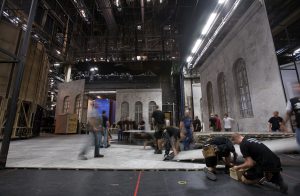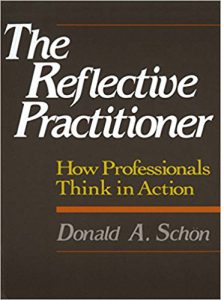 I’ve been involved with my church’s annual Christmas Pageant for twenty two years. Early on, I helped our youth minister wrangle the hordes of young kids. We lost her to cancer twenty years ago and I was asked to step up and take on the whole show the following year. I now own the production and there is no escape. I get an email each November from our director of youth ministries asking if I will do it again. The request is a polite fiction; there is only one possible answer.
I’ve been involved with my church’s annual Christmas Pageant for twenty two years. Early on, I helped our youth minister wrangle the hordes of young kids. We lost her to cancer twenty years ago and I was asked to step up and take on the whole show the following year. I now own the production and there is no escape. I get an email each November from our director of youth ministries asking if I will do it again. The request is a polite fiction; there is only one possible answer.
Somewhere in the last fifteen years, I found a better way to lead by getting out of the way. I asked a couple of our high school students to help me out and work with the younger kids on individual scenes. I was simply trying to cope but something more interesting happened. One of my “assistants†would find me and ask “Mr. McGee, we think the shepherds should fall down when the angels appear; what do you think?†I quickly learned that the best answer was always “Yes.â€
Now the pattern is set. I’ve always got more than enough high schoolers ready to help. The younger kids listen better to the high schoolers than they ever would to me. And my job is to say yes. The biggest question we ever deal with is who will play the Baby Jesus this year; last year’s Mary played the Baby Jesus about a dozen years back.
This microcosm has become a laboratory that shapes my approach to leadership. “It’s complicated†is an appropriate response to most organizational issues that surface in today’s environment. Yet, you still must act. None of us have the capacity to keep it all in our heads; the broad vision, the players, the sequence of events that must be orchestrated. It’s why organizations exist; to do more than we can as individuals.
The fundamental task of leadership is to create the environment where everyone can contribute. What’s surprising and difficult is how much of that depends on your ability to get out of the way. There are lots of ways to get in the way. Getting out of the way turns out to be more difficult. Get too far out of the way and you create a vacuum. Simply articulating a grand vision leaves too much space for others to get in each others way.
Where is that middle space that shapes without dictating? My claim is that it revolves around distributing responsibility and listening carefully as everyone works to interpret the vision and make it real. The listening is where you learn how well the vision is understood. You say “yes†far more often than not because the questions are coming from those who are better positioned to grasp how the vision, the action, and the environment are interacting.


